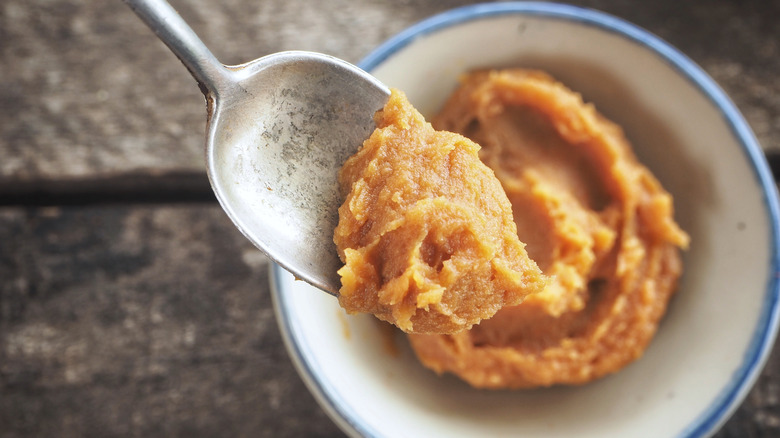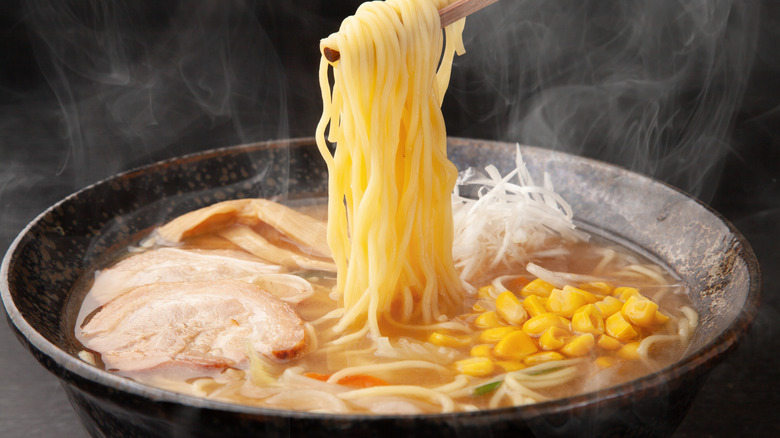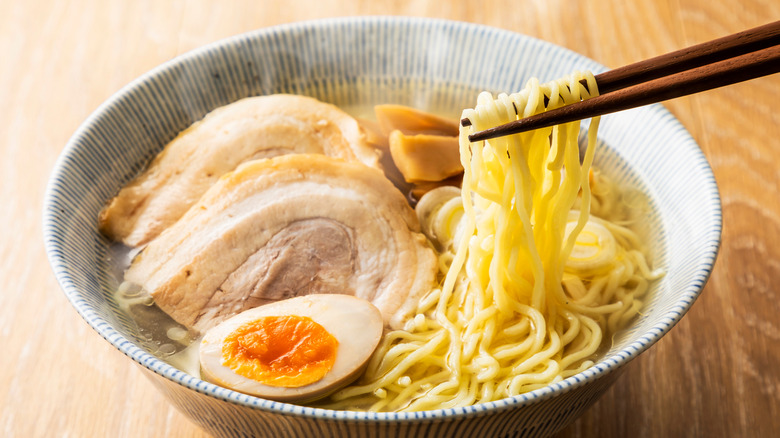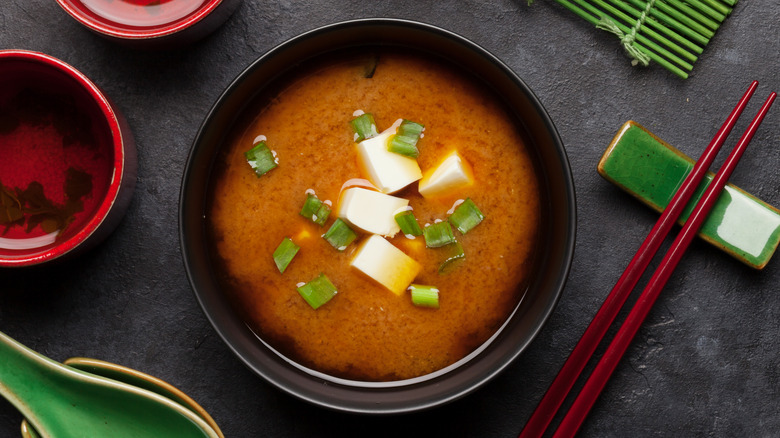Miso Tare Is The All-In-One Japanese Sauce For Ultimate Umami Flavors
While there are plenty of ways you can elevate your late-night snack of instant ramen, attempting to replicate an authentic bowl takes a few tricks up your sleeve. You'll likely have your focus on the toppings and garnishes, such as creating the perfect jammy egg or slicing up some green onion; however, learning to quickly whip up some miso tare is what will really make all the difference.
Miso tare, the latter word meaning sauce in Japanese, is one of the most important recipes to master if you're in the business of making homemade ramen. It is made from a combination of the three different types of miso, and it lends the powerfully complex flavor component that ramen bowls are famous for. For those unacquainted with funky miso, it's a fermented, savory paste made from a mix of soybeans, rice, and koji (the primary umami component). But, it's more than just the miso paste that makes miso tare a special, noteworthy sauce.
Ingredients in miso tare
When ordering a bowl of miso ramen from your favorite local ramen bar or following an authentic recipe for the dish, there will likely be an infusion of tasty miso tare in the broth. It's the first ingredient that gets added into your bowl, and when the hot broth hits it, the flavor disperses and coats all the other ingredients. However, it's not the miso paste alone that provides such a bold, delicious flavor.
Miso tare is made from yellow miso or a combination of red and white miso. Additions of sesame paste, sesame oil, mirin, soy sauce, ginger, garlic, sugar, and rice vinegar also accompany the miso to add salty, tangy notes to the mixture. Recipes can differ, so feel free to get creative with your own rendition — for example, you can add a bit of chili paste for some added spice.
However, if you're not the biggest fan of miso, that doesn't mean you should skip out on adding tare to your ramen entirely. There's actually three varieties of tare, and each one is incredibly unique and equally delicious.
The three types of tare
While you now know that miso tare is a delicious component of miso ramen, shoyu and shio ramen are also equally delicious dishes that feature — you guessed it — shoyu and shio tare respectively.
The base of miso tare is, of course, miso, however, shoyu tare's main flavor comes from soy sauce, which is what the word means in Japanese. It was the first tare created, and an authentic bowl of shoyu ramen is not complete without this spicy addition. Shio tare is a bit more salty and fishy than the other varieties and is often made from fish flakes, anchovies, seaweed, or other ingredients from the sea — but a generous helping of salt is the most important ingredient.
While every chef makes their tare a bit differently, there are several easy recipes you can follow at home to create an ideal sauce for all your foodie needs.
How miso tare is made and eaten
The best part about making this umami-rich sauce is that it can be thrown together in just five minutes. The first step is to mince your fresh ginger and garlic and add it to a dish. The miso of your choice can then be mixed together with the aromatics, along with the other ingredients you're using. Once everything is combined well into a paste-like consistency, it's ready to be scooped into your ramen bowl. And, if you've created a big batch of this key ingredient, it can be stored in your fridge for up to two months, ready for your next Japanese food craving.
While miso tare is an essential addition to miso ramen, it can also be smothered on juicy cuts of meat or enjoyed over rice. It can also make a great addition to freshly cooked vegetables or stir-fries that need a bit of a flavor boost. Whatever your go-to Japanese dishes are when cooking at home, it might be worth whipping up a bowl of miso tare to bring your creations to the next level.



